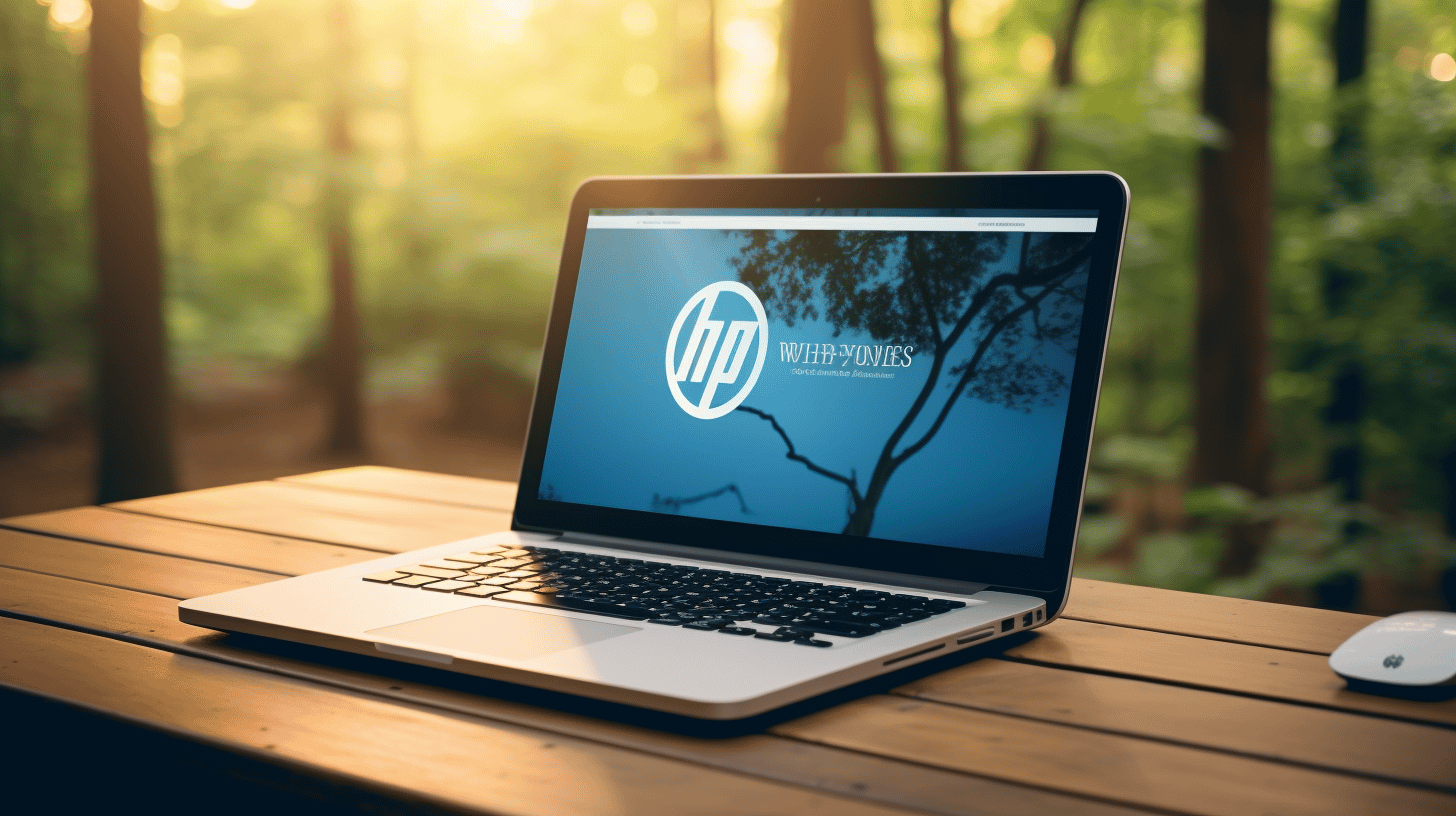如果您是 WordPress 网站所有者,及时了解最新更新对于网站的成功和安全至关重要。通过定期更新,您可以确保网站保持安全、运行顺畅并充分利用新功能和改进。
在本文中,我们将探讨 WordPress 更新的重要性以及为什么每个网站所有者都应优先考虑它们。我们还将提供有关如何有效更新 WordPress 网站以及解决在此过程中可能出现的任何潜在问题的见解。因此,无论您是初学者还是经验丰富的 WordPress 用户,本指南都将为您提供所需的知识,以保持您的网站顺利且安全地运行。
让我们深入了解每个 WordPress 网站所有者都应该知道的所有重要更新!🚀
了解 WordPress 更新
在网站和在线平台不断发展的世界中,了解最新的进展、功能和安全措施至关重要。这就是 WordPress 更新发挥作用的地方。WordPress 是目前最流行的内容管理系统 (CMS) 之一,它会定期发布更新以增强性能、修复错误和增强安全性。
什么是 WordPress 更新?
WordPress 更新本质上是 WordPress 软件的新版本或发行版。它们包括一系列改进,例如错误修复、功能增强,以及最重要的安全补丁。更新可能涉及对核心 WordPress 软件、主题、插件甚至支持 WordPress 的底层技术的更改。
定期更新你的 WordPress 网站至关重要,原因如下:
- 安全:新的漏洞和攻击手段层出不穷。更新 WordPress 安装有助于保护您的网站免受潜在的黑客攻击,并保证您的敏感数据安全。
- 表现:更新通常包括优化和错误修复,可以提高您网站的速度和性能。
- 新功能:更新可能会引入令人兴奋的新特性、工具或功能,可以增强您的网站或使其更易于管理和定制。
- 兼容性:更新还可确保您的 WordPress 安装与您可能正在使用的最新版本的主题、插件和其他工具兼容。
WordPress 更新的类型
WordPress 更新可分为三大类:
- 重大更新:这些更新通常会对 WordPress 软件进行重大更改。它们可能包括主要功能增强、用户界面改进,甚至核心代码库的结构更改。主要更新通常有编号,例如 WordPress 5.0 或 WordPress 6.0。
- 细微更新:次要更新侧重于修复错误、解决性能问题和改进现有功能。次要更新发布频率比主要更新高,以版本号中的第二位小数标识。例如 WordPress 5.7 或 WordPress 5.8。
- 安全更新:顾名思义,安全更新优先修复已知漏洞并保护您的 WordPress 网站免受潜在威胁。这些更新对于维护安全的在线状态至关重要,并且通常在发现漏洞后立即发布。
值得注意的是,更新 WordPress 不仅仅涉及核心软件。您网站上安装的主题和插件也需要定期更新以确保兼容性和安全性。建议启用自动更新或定期检查更新并手动执行。
保持 WordPress 网站更新的好处
🚀 您的 WordPress 网站是否是最新的?如果没有,您可能会错过一些重要的好处。保持 WordPress 网站更新对于维护其安全性、功能和整体性能至关重要。在本文中,我们将探讨保持 WordPress 网站更新的最大优势。
增强安全性
✅ 保持 WordPress 网站更新的主要原因之一是增强其安全性。WordPress 是一个广泛使用的平台,这使其成为黑客和恶意行为者的诱人目标。通过定期更新 WordPress 网站,您可以获得以下好处:
- 安全补丁程序:更新通常包括修复可能导致您的网站遭受攻击的漏洞。通过及时安装这些更新,您可以保护您的网站免受潜在的安全漏洞的侵害。
- 降低恶意软件风险:过时的 WordPress 版本或插件容易受到恶意软件感染。保持最新状态可确保您拥有最新的安全措施来保护您的网站及其数据。
- 插件兼容性:更新不仅能解决安全问题,还能确保与最新版本的插件和主题兼容。使用过时的插件可能会带来安全风险,因此保持更新可以增加一层额外的保护。
🔐 请记住,更新的 WordPress 网站是受到良好保护的 WordPress 网站。定期更新有助于增强网站的安全性并抵御潜在威胁。
问题修复
🐛 保持 WordPress 网站更新的另一个重要好处是解决错误和问题。更新通常会附带错误修复,以解决上一版本中报告的任何问题或故障。通过更新您的网站,您可以:
- 提高稳定性:错误修复有助于提高网站的整体稳定性,减少停机或崩溃的可能性。
- 增强用户体验:用户体验对于任何网站的成功都至关重要。通过消除错误,您可以为访问者提供流畅、无缝的体验,确保他们保持参与度并再次访问。
- 解决兼容性问题:更新通常包括插件、主题和其他组件的兼容性修复。确保网站的所有元素和谐运行可以防止兼容性相关问题。
🔧 保持 WordPress 网站更新可确保您能够获得最新的错误修复和改进,从而获得更稳定、更用户友好的体验。
新功能和改进功能
✨ 最后,及时了解 WordPress 更新可让您访问令人兴奋的新功能和改进的功能。WordPress 不断发展,每次更新都会带来:
- 新功能:更新通常会引入新功能和工具,以增强您网站的功能。这些功能包括改进的内容管理选项和增强的设计功能。
- 性能改进:更新可能包括性能增强,可优化您网站的速度和效率,最终改善用户体验和搜索引擎排名。
- 与新技术的兼容性:随着技术的进步,新版本的 WordPress 确保与最新的 Web 标准、框架和技术兼容。这种兼容性使您能够利用尖端开发成果并保持领先于竞争对手。
🌟 通过保持 WordPress 网站更新,您可以充分利用最新的功能和改进,让您的网站保持新鲜和相关性。
📚 准备好更新您的 WordPress 网站了吗? 遵循这些 保持 WordPress 网站更新、安全且 SEO 友好的 10 个技巧 以确保更新过程顺利且成功。
如何更新你的 WordPress 网站
您是否注意到您的 WordPress 网站运行速度比平时慢了一点?或者您可能错过了最新的安全功能和错误修复?也许是时候更新您的 WordPress 网站了。但别担心,我们为您提供了有关如何更新 WordPress 网站的分步指南。
准备更新
在开始更新 WordPress 网站之前,必须采取一些预防措施以确保过程顺利进行。请按照以下步骤准备更新:
- 备份您的网站:在进行任何更改之前,创建 WordPress 网站的备份至关重要。这样,如果在更新过程中出现任何问题,您就可以将网站恢复到以前的状态。
- 检查兼容性:并非所有主题和插件都与最新版本的 WordPress 兼容。更新之前,请确保您的主题和插件兼容。您可以通过访问主题或插件的官方网站或支持论坛轻松检查这一点。
- 更新您的插件和主题:过时的插件和主题可能会带来安全风险并导致网站性能问题。在更新 WordPress 本身之前,请确保将所有插件和主题更新到最新版本。
🔒 专业提示:使用可靠的备份插件,例如 UpdraftPlus 或者 备份伙伴 使备份过程自动化。
✅ 您知道吗?WordPress.org 插件目录为每个插件提供了兼容性部分,用户可以在其中报告该插件是否适用于最新的 WordPress 版本。
🔄 琐事:你知道吗 托管 WordPress 是否提供了一项名为“WordPress 自动更新”的功能来为您处理自动更新?它简化了更新过程并确保您的网站始终保持最新状态。
执行更新
完成必要的准备工作后,就可以执行更新了。请按照以下步骤更新您的 WordPress 网站:
- 更新 WordPress 核心:要更新 WordPress 本身,请导航至 WordPress 仪表板中的“更新”部分。如果有可用更新,您将看到通知。单击“立即更新”按钮以启动更新过程。
- 测试您的网站:更新 WordPress 后,彻底测试您的网站以确保一切正常运行至关重要。检查您网站的页面、功能和表单,以确保它们按预期运行。
- 验证主题和插件兼容性:由于您已更新 WordPress,因此最好仔细检查主题和插件的兼容性。访问官方网站或支持论坛,确保没有报告兼容性问题。
- 监控性能:更新后,请密切关注网站的性能。监控页面加载时间、服务器响应时间和整体用户体验。如果您发现任何性能问题,请立即调查并解决。
更新您的 WordPress 网站对于保持其顺畅运行、安全以及使用最新功能至关重要。通过遵循以下步骤,您可以确保成功更新而不会影响网站的性能。请记住在更新之前始终备份您的网站并验证兼容性。那么,您还在等什么?为您的 WordPress 网站提供应有的更新!
了解和管理 WordPress 自动更新
在管理 WordPress 网站时,自动更新可以成为救星。它们可确保您的网站始终使用最新的安全补丁和错误修复,而无需您手动更新每个插件或主题。在本节中,我们将深入研究配置自动 WordPress 更新的过程,探索您需要牢记的各种选项和注意事项。
配置自动 WordPress 更新
在 WordPress 中配置自动更新相对简单。只需几个简单的步骤,您就可以为 WordPress 核心、插件和主题启用自动更新。让我们看看如何做到这一点:
- WordPress 核心更新: 要启用 WordPress 核心的自动更新,您只需将以下代码行添加到网站的
wp-config.phpfile: - 插件和主题更新: 默认情况下,WordPress 中的插件和主题未设置为自动更新。但是,您仍然可以使用“Easy Updates Manager”或“Automatic Plugin Updates”等插件为单个插件和主题启用自动更新。
定义('WP_AUTO_UPDATE_CORE', true );此代码段允许您的 WordPress 网站在有新版本可用时自动更新到最新版本的 WordPress。需要注意的是,启用 WordPress 核心的自动更新是一个关键的决定,应该在考虑到对您的网站与主题和插件的兼容性的潜在影响后做出。
安装并激活其中一个插件后,您可以访问设置页面来选择要自动更新的插件和主题。这样您就可以自由选择 WordPress 网站的哪些组件接收自动更新,确保您能够控制兼容性和功能。
请记住:自动更新可能是一把双刃剑。虽然它们提供了便利和安全优势,但也可能导致您的网站出现兼容性问题。启用自动更新后,定期监控您的网站并保留备份以防出现任何问题非常重要。
有关配置自动 WordPress 更新和了解最佳实践的更详细指南,请查看 WP 自动更新指南。它提供深入的信息和见解,帮助您简化站点管理流程。
处理潜在的更新问题
更新 WordPress 网站是确保其安全性、功能性和整体性能的一项重要任务。但是,有时这些更新可能会带来一些让您困惑的问题。不过别担心,我们已经为您做好了准备!在本节中,我们将讨论一些常见的 WordPress 更新问题,并为您提供轻松克服这些问题所需的解决方案。
常见的 WordPress 更新问题及解决方案
以下是 WordPress 用户可能遇到的一些常见更新问题及其相应的解决方案:
- 主题或插件不兼容: 有时,在更新 WordPress 后,您可能会注意到主题或插件无法正常运行或导致冲突。当这些组件与新版本的 WordPress 不完全兼容时,可能会发生这种情况。要解决此问题:
- 将主题和插件更新至最新版本。开发人员经常发布更新以确保与最新版本的 WordPress 兼容。
- 如果问题仍然存在,请尝试一次禁用一个插件以找出罪魁祸首。确定哪个插件导致问题后,请联系开发人员寻求帮助或考虑寻找提供类似功能的替代插件。
- 死机白屏: 对于任何网站所有者来说,这都是相当可怕的景象。它指的是在更新 WordPress 或其插件后尝试访问网站时出现的空白屏幕。您可以采取以下措施来修复它:
- 通过 FTP(文件传输协议)访问您的 WordPress 文件。
- 找到
wp-内容目录并重命名插件文件夹类似于插件_旧. - 现在,尝试再次访问您的网站。如果加载正常,则说明存在导致该问题的插件。
- 重命名
插件_旧文件夹返回插件,然后逐个停用每个插件,直到找到导致白屏的插件。联系插件开发人员寻求支持或寻找替代方案。 - 损坏或缺失的样式: 更新 WordPress 后,您可能会发现网站布局一片混乱,缺少字体、样式表损坏或图像扭曲。要解决此问题:
- 清除浏览器缓存以确保您正在查看网站的最新版本。
- 请查看主题文档或支持论坛,了解更新后需要采取的具体步骤。某些主题可能需要进行额外的调整或设置才能恢复正常外观。
- 如果问题仍然存在,请尝试暂时切换到默认 WordPress 主题,看看问题是否出在您当前的主题上。如果是,请联系主题开发人员寻求帮助。
- 数据库升级错误: 有时,在 WordPress 更新期间,您可能会遇到与升级数据库相关的错误。这种情况可能由于多种原因而发生,例如服务器资源不足或数据库文件损坏。要解决此问题:
- 在进行任何更改之前,请创建网站数据库的备份。
- 请咨询您的网络托管服务提供商的支持团队,以确保您的服务器具有足够的资源来执行数据库升级。他们可能需要增加 PHP 内存限制或调整其他服务器设置。
- 如果问题仍然存在,您可以尝试按照 WordPress Codex 中提供的说明修复数据库。
需要注意的是,这些只是您在使用 WordPress 时可能遇到的潜在更新问题的几个例子。每种情况可能都有其独特的解决方案,因此如有需要,请随时寻求进一步的帮助。请记住,保持主动性、利用最佳实践并定期更新您的 WordPress 安装、主题和插件,将最大限度地减少遇到这些问题的机会。
要深入了解常见的 WordPress 问题排查,请查看 WordPress 更新问题及解决方案.
顺利完成 WordPress 更新过程的技巧
您准备好为您的 WordPress 网站进行急需的更新了吗?无论是主题、插件还是核心更新,保持 WordPress 网站最新对于安全性、性能和新功能增强都至关重要。但更新过程有时可能令人生畏,特别是如果您不熟悉 WordPress 更新的细节。
但不要害怕!在本文中,我们将分享一些实用技巧,以确保 WordPress 更新过程顺利无忧。那么,让我们开始吧!
1. 备份您的网站
在开始任何更新之前,创建网站备份至关重要。这样,如果在更新过程中出现任何问题,您都有安全网可以依靠。WordPress 有几种可靠的备份插件,例如 UpdraftPlus 和 BackupBuddy,它们使备份过程变得轻而易举。
2. 在临时网站上测试更新
在将更新应用到您的实际网站之前,最好先在临时网站上测试更新。临时网站是您网站的克隆,可让您在不影响实际网站的情况下尝试更新和更改。通过在临时网站上测试更新,您可以识别可能出现的任何兼容性问题或冲突,并确保在应用更新时在实际网站上顺利过渡。
3. 首先更新插件和主题
更新 WordPress 网站时,通常最好先更新插件和主题,然后再更新核心。这是因为插件和主题通常与特定版本的 WordPress 具有兼容性依赖性。通过先更新主题和插件,您可以确保它们与最新版本的 WordPress 兼容,并减少以后遇到任何兼容性问题的可能性。
专业提示: 不要忘记检查您的插件和主题是否与您计划更新到的 WordPress 版本兼容。许多插件和主题开发人员在其发行说明或文档中提供了此信息。
4.更新您的WordPress核心
更新插件和主题后,就该更新 WordPress 核心了。这是您网站的核心,更新它将确保您拥有最新的安全补丁、错误修复和性能改进。
更新 WordPress 核心非常简单,只需单击 WordPress 仪表板上的“立即更新”按钮即可。不过,更新前最好先备份,以防万一!
5. 测试并验证
更新网站后,彻底测试并验证一切是否按预期运行至关重要。花点时间浏览您的网站,测试不同的功能,并确保所有功能和插件均正常运行。
如果您在更新后发现任何问题或错误,请务必及时排除故障并解决。请联系插件或主题开发人员寻求支持,或咨询庞大的 WordPress 社区以获取指导。
6.维护健康的WordPress环境
定期更新 WordPress 网站只是其中的一部分。为了确保将来的更新过程顺利进行,维护健康的 WordPress 环境至关重要。以下是一些需要牢记的其他提示:
- 删除未使用的插件和主题以最大限度地减少冲突和安全漏洞的可能性。
- 定期更新您的插件和主题,以获得最新的功能、错误修复和安全补丁。
- 使用提供自动备份、安全措施和高效支持的可靠托管服务提供商。
- 使用 Google Analytics、安全插件和正常运行时间监控服务等工具定期监控您网站的性能和安全性。
通过遵循这些提示和最佳实践,您将能够像专业人士一样处理 WordPress 网站的更新过程。请记住,保持最新状态不仅可以确保网站的平稳运行,还可以增强其安全性和性能。
那么,你还在等什么?保持 WordPress 网站更新,给予它应有的爱与关怀!🚀
结论
总之,掌握 WordPress 更新对于每个网站所有者来说都至关重要。它不仅可以增强安全性,还可以确保您的网站配备最新功能和改进的功能。通过定期更新您的 WordPress 网站,您可以保护它免受潜在漏洞的侵害并享受无缝的用户体验。
请记住,更新 WordPress 网站的过程并不一定非常繁琐。通过适当的准备和执行,您可以轻松地让网站保持最新状态并顺利运行。
如果您正在寻找一个可靠的平台来简化您的 WordPress 管理并确保专家支持,请考虑 Managed-WP。™ 借助其优质的托管 WordPress 云托管服务,您可以专注于您的数字体验,而将技术方面的问题留给专家。详细了解 Managed-WP 的产品,请访问 managed-wp.com.
保持 WordPress 网站更新、安全并进行优化,以获得成功。不要让过时的软件阻碍您实现目标。采取必要的措施,让您的网站顺利运行,并享受定期 WordPress 更新带来的好处。
常见问题
- WordPress 网站所有者应该了解哪些重要更新?
WordPress 网站所有者应该了解的一些重要更新包括:1. 定期更新 WordPress 核心、主题和插件以确保安全性和功能性;2. 熟悉最新的 WordPress 版本及其新功能;3. 随时了解任何安全漏洞并应用必要的补丁或修复;4. 备份网站数据以防止出现任何问题时数据丢失;5. 监控网站分析和性能以确定需要改进的领域。
- 我应该多久更新一次 WordPress 核心、主题和插件?
建议在有新更新可用时立即更新 WordPress 核心、主题和插件。定期更新可确保您的网站保持安全、功能齐全并与最新的 WordPress 版本兼容。但是,在更新之前,建议进行备份并确保与其他插件和主题兼容。
- 为什么保持更新最新版本的 WordPress 很重要?
出于多种原因,保持更新到最新的 WordPress 版本至关重要。它可以确保您的网站免受最新漏洞的侵害、提高性能和稳定性、提供对新功能和改进的访问,并确保与开发人员发布的新插件和主题兼容。
- 如何监控我的 WordPress 网站的性能和分析?
您可以使用各种工具(例如 Google Analytics、Jetpack 或其他特定于 WordPress 的分析插件)监控 WordPress 网站的性能和分析。这些工具提供有关网站流量、用户行为、转化率和其他重要指标的宝贵见解,可帮助您做出明智的决策并优化网站。
- 如果 WordPress 更新导致我的网站出现问题,我该怎么办?
如果 WordPress 更新导致您的网站出现问题,您可以尝试几个故障排除步骤。首先,通过停用插件并切换到默认主题来检查问题是否由插件或主题冲突引起。如果问题解决,则意味着插件或主题导致了问题。然后,您可以联系相应的插件或主题开发人员寻求帮助,或搜索提供类似功能且没有冲突的替代插件/主题。



















